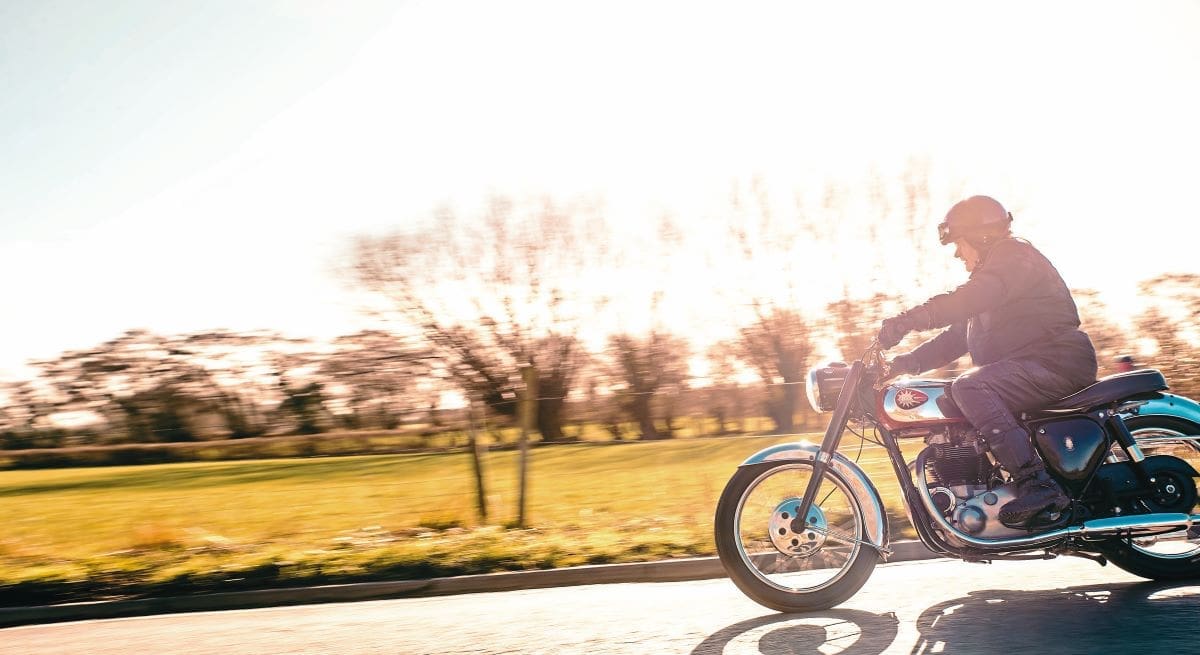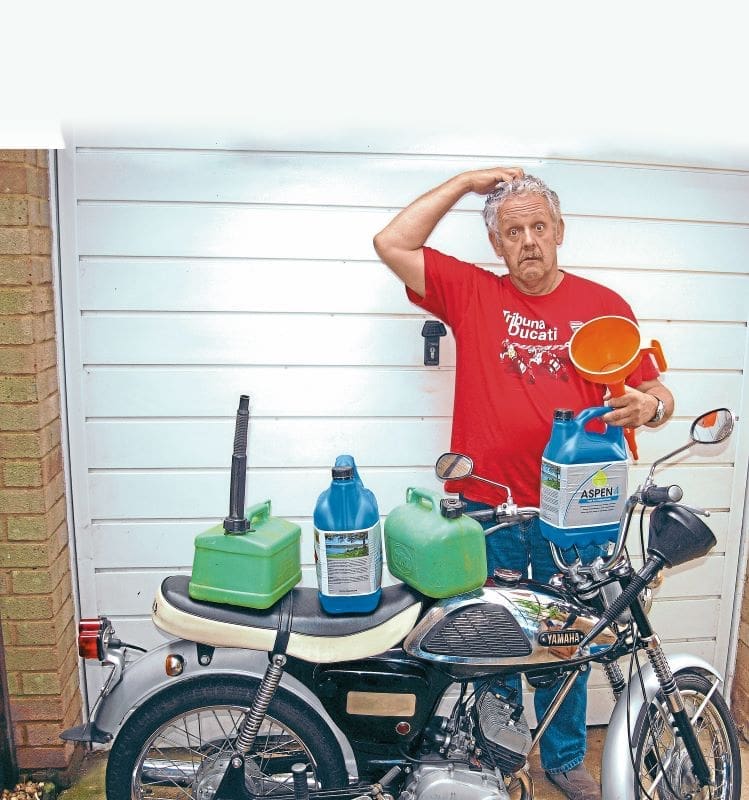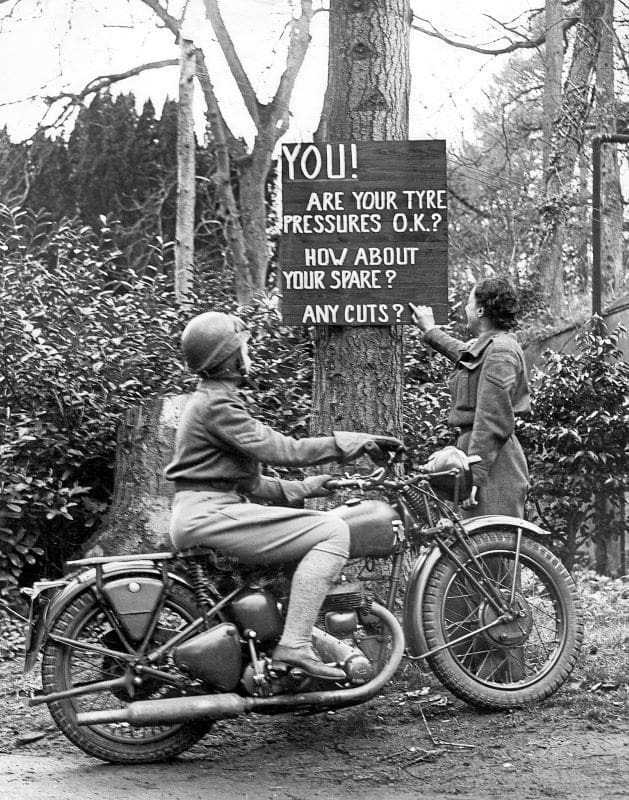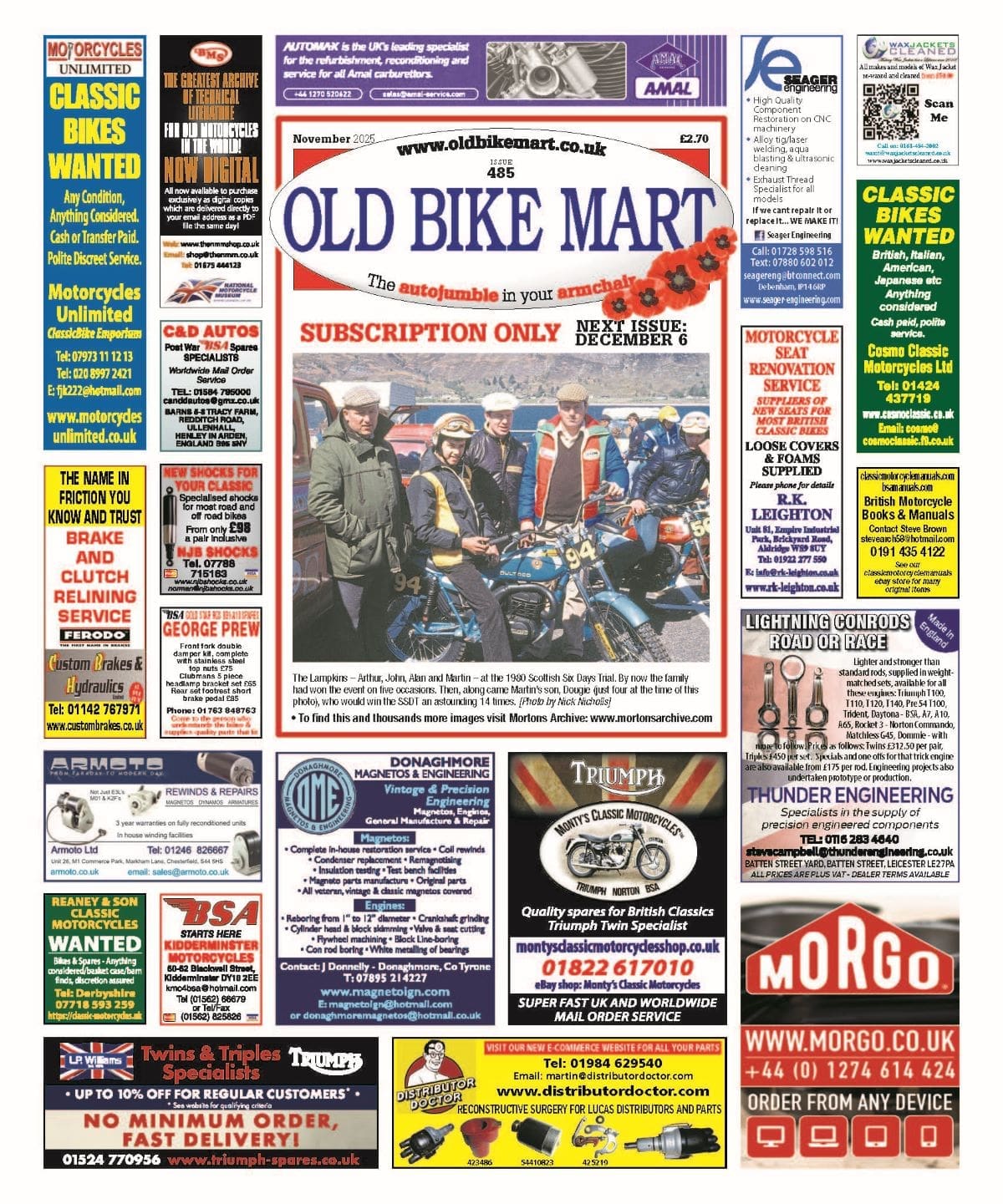
Words by Those Who Should Have Known Better
Photos by Mortons Archive
Enjoy more classic motorcycle reading, Click here to subscribe to one of our leading magazines.
If you are tempted by the world of old bikes, you are entering one of wonderment. Of just going for a ride, of smiles per miles, of listening to folk’s stories about when they rode, and of just being your own person, not a sheep. On a summer’s evening, it can banish almost any woe.
But like all new worlds, there are things to look out for. Here is our hard-earned, hard-nosed guide to those things we were told, didn’t listen to, and lived to regret.
Always travel with tools
It is guaranteed that you won’t have the one you need for the job, but it will make you feel slightly better as you listen to the recovery driver talking about his political views, knowing you did your best. Don’t forget rag; old towels are good.
Don’t kick your bike over without boots on
For some stupid reason the fashion on old bikes is to underdress when it comes to safety. Don’t follow it, especially when it comes to boots. One day you will slip and you will hit your ankle. And it will hurt, or you will break it. Back in’t day, there was also much less worry about hot exhausts and the like, so watch modern textiles, which love to melt to anything hot.
Once you have your first machine or after a restoration, make your initial rides in ever-increasing sized circles from home.
The length of your ride can increase with confidence in the bike; how it feels and its reliability. Problems can form as simply as not being used to a choke, fuel taps being the wrong way round, a puncture… or can come in more worrying forms, such as something not done up or an increasing noise. Pushing a bike is rubbish and hot, and you will see people you know while doing it. Pushing is even worse when trying to work out what said noise could be.
On bikes with an oil tank (mainly British bikes), check your oil when you get home – not before you go out. It might have ‘wet-sumped’.
Many older bikes do not have their oil collecting in the sump, but pump it back to an oil tank. The idea was to lower the drag on the crankshaft (is used on performance cars to this day), as well as preventing leaks. Certain makes of bike are worse than others due to their design of pump. Bad ones will slowly allow oil to drain from the tank, past the pump and down into the sump. So, if you check your oil level in the tank after a few days, it may seem low and, like a good rider, you’ll fill it up. The bike will feel sluggish to start, as you’re trying to push the crank through the oil. Then, once running, the bike will be overfilled, causing too much pressure, oil everywhere, and generally bad things.

Check oil is returning to the tank when you first start the bike.
If you’ve not started the bike for a couple of weeks, it will possibly have wet-sumped, as described above. Once the bike has started and ticks over, take the oil tank cap off; near the top should be a pipe where the oil is fed in from the engine. Looking at oil in an oil tank is like looking for black holes in space, so use a torch – you’re looking for small bubbles or a sign that oil is feeding back.
Make sure the oil light goes out and the ammeter is showing that it’s charging when you first start the engine.
A lazy oil light could mean several things, but nothing good – seek help. Checking that the dynamo or alternator are generating power to run lights etc. and to charge battery is also essential, or you’re pushing it home.
Free the clutch the first time you start the bike from cold.
The clutch plates stick together over time and won’t release, allowing a gear, so pull the clutch lever in and kick over until you feel the clutch spinning freely – it spins more freely. The more time you haven’t used it, the more you’ll have to kick. Use your bike more.
Develop your own starting procedure for cold, hot and warm engine temps (default cold start: petrol on, choke on, tickle, kick, tickle, ignition on, kick).
This sounds odd, but sticking to a ritual helps spot problems starting. It also helps when you’re trying to start your bike in front of everyone at the meet and it all goes out of your head. Remember the golden rule: the amount of kicks needed to start at a bike meet is the number of people watching, multiplied by four.
If you try to start the bike by kicking it over too many times, you will flood the engine.
If you’re at this point, wipe the sweat from your brow, rest for one minute, then choke off, throttle open, and kick again.
Choke on is ‘loose wire’, choke off is ‘tight wire’ – opposite to a modern bike.
What? Quite simply, this is how it feels to turn off or on, as in the old days they didn’t class everyone as stupid and did not see the need for signs everywhere. The choke in an old carb like an Amal is a block of aluminium that drops down into the airway of the carb, with the choke control feeling ‘loose’ or ‘slack’. To turn the choke off, the block is raised, hence it feels like a ‘tight wire’.
If your bike has electronic ignition, there is an 11.5v minimum requirement to get it to start.
Make sure your generating system is working alright, consider using LED bulbs to minimise usage, check all leads and connections are clean and tight, and invest in a trickle charger. Traditional systems using points may need adjusting, but will work with a much lower voltage.

Turn the petrol off every time you stop.
Modern taps are vacuum-operated and only turn on when the engine is running as a safety. Old taps are like a – tap. Left on, it can flood the carb and when it doesn’t start, you look silly. Turn it off… it costs a bloody fortune nowadays anyway.
Remember to turn the petrol on.
Erm…
Don’t sweat about small oil leaks.
Do sweat about small fuel leaks.
Get a manual.
Dating, raising kids, and how to understand the rules of rugby have no manual. Bikes do – buy one – and read it. It saves botching and breaking stuff.
Expect to make small adjustments/repairs/servicing regularly.
Enjoy – it’s all part of the old bike experience. You are a team. Anyway, many bike shops won’t even take an old bike on, so get used to it.
Don’t talk to strangers when out on your bike – they’ve all owned a Vincent.
Alternatively, learn how to mask your boredom by imagining happy thoughts. If they get their phone out to show you photos, run.
Beware the wet leaves on the road – there lurks the skid demon.
A similar problem to modern bikes, but with worse tyres and suspension. And as you’re probably going slower, it all happens in slow motion.
Don’t ride all on the front brake like a modern bike.
You won’t stop as old brakes are terrifyingly crap. Old bikes were designed when kids knew your name, the vicar waved, and we all sat around drinking tea. You now live in the world of 50-50 front and back braking. The rear brake is often larger than the front – and you need it.
Try to corner on a ‘rising throttle’.
Slow in, throttle out. And don’t stick your knee out.
Learn to ‘listen’ to your bike.
Sounds nonsense, but you’ll get to know it and if something sounds amiss.
Don’t rush your gear changes.
It won’t speed up your journey; it will speed up the wear of the gearbox.
Use super unleaded.
Don’t be a cheapskate. And run an additive to help, especially over the winter to prevent the petrol from going off, or drain the system completely.
Be careful who you trust.
There’s a lot of knowledge out there; most of it belongs on roses. Learn who to believe.
After all that, trust us – it really is enjoyable!



